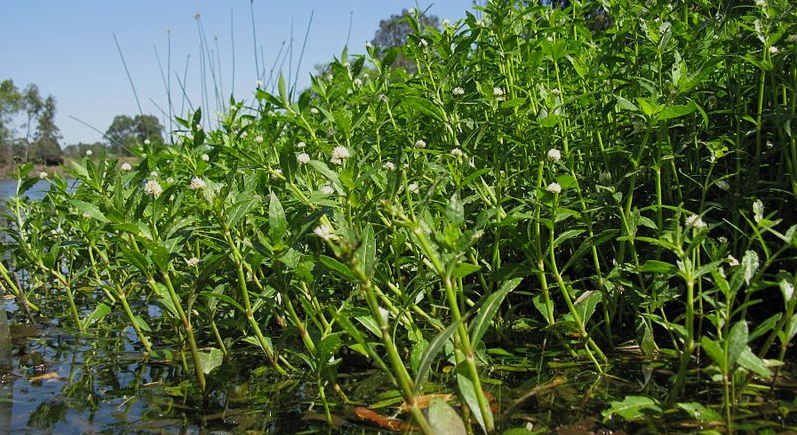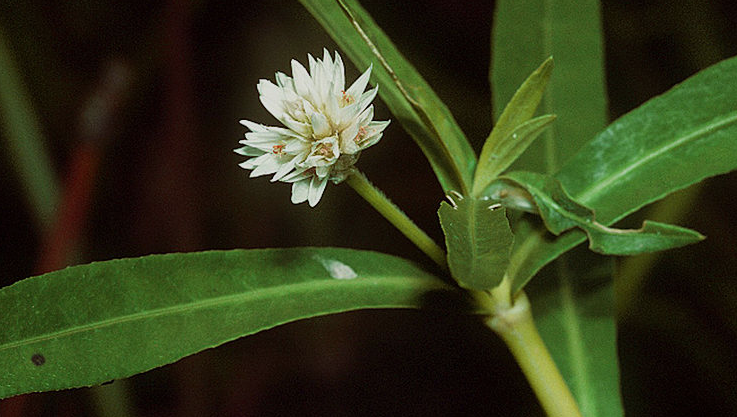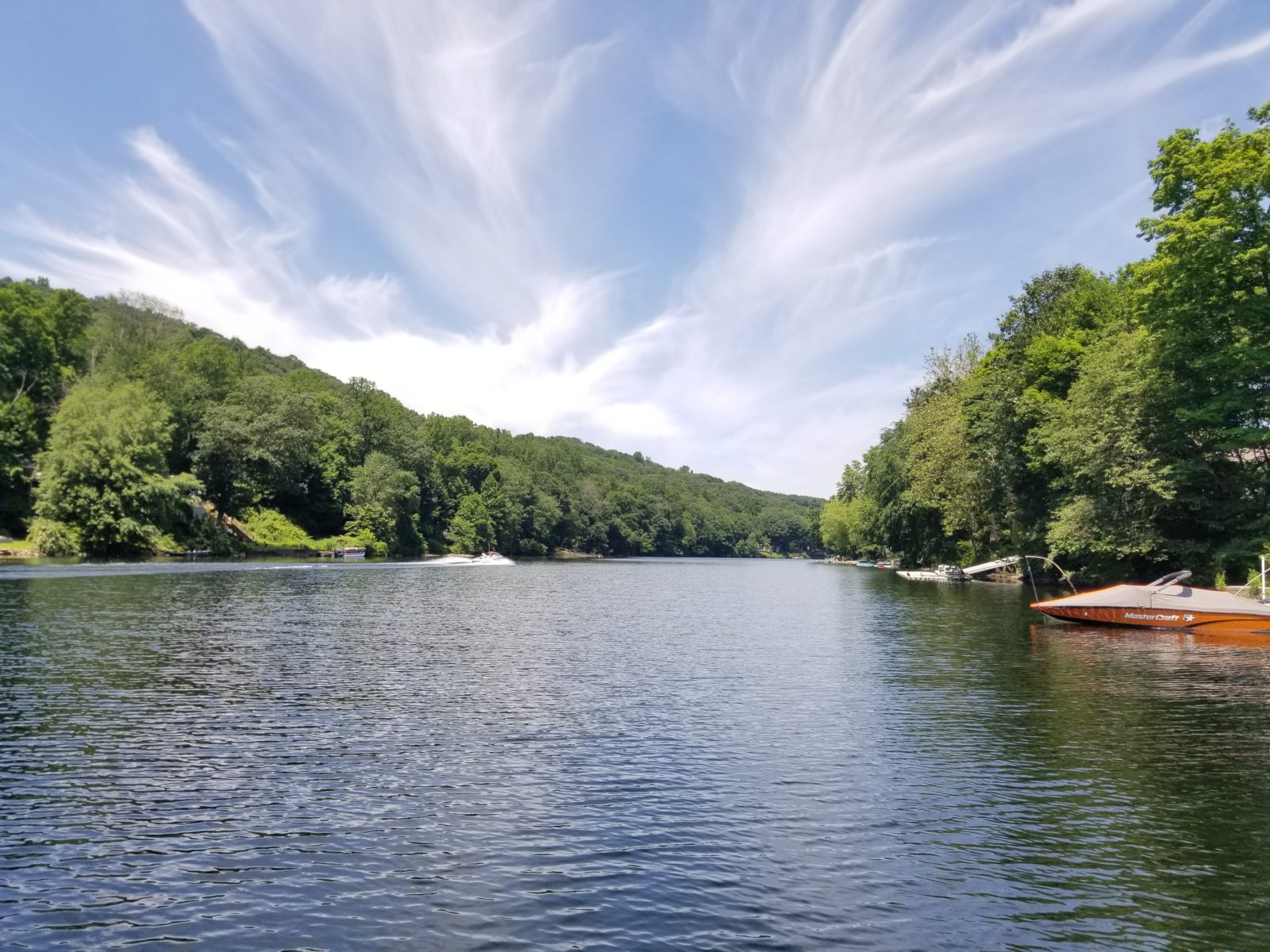Invasive Species Highlight: Alligatorweed
July 5th, 2018
Alligatorweed (Alternanthera philoxeroides) is a perennial plant native to South America. It was first reported in the United States in 1897. Listed as a prohibited aquatic weed in many states, its growth has caused significant economic and ecological damage throughout the Southern United States.

Alligatorweed reproduces in North America primarily through vegetative propagation, but seeds have been found as well. Morphologically speaking, alligatorweed can be varied based on the surrounding environment; in fact, it has adapted to grow in both aquatic ecosystems and xeric (desert) habitats. Typically, this invasive plant can be identified by its elliptical or lanceolate leaves with smooth margins arranged in opposite pairs along the shoots. The shoots form roots at the nodes along a hollow stem, which keeps the shoots buoyed in the water—thus forming dense, floating mats. Alligatorweed also forms white flower clusters on a spike which protrudes from the leaf axial.
The unimpeded spread of alligatorweed in non-native environments can lead to serious problems. Due to its rapid growth rate, the invasive weed can quickly inhibit or block the drainage of water from canals and ditches, leading to flooding and increased sedimentation. It displaces native plants along banks and in shallow water, which also eliminates food sources for native animals and can reduce dissolved oxygen exchange, further diminishing native vegetation.
Alligatorweed not only disrupts the balance of aquatic ecosystems, but it can also severely limit recreational activity in lakes and ponds. Fishing and swimming may be negatively impacted by dense mats of growth that can block boat navigation. These mats also provide increased habitat for mosquitoes, which are an unwelcome addition to an otherwise enjoyable outing on the lake. Additionally, the aesthetics of community and golf course ponds are diminished with the presence of alligatorweed, potentially affecting their economic outlook.

The effective control and management of alligatorweed can be achieved through both biological and mechanical means. The release of the Alligatorweed Flea Beetle in North America is one example of a biological control method, though, to date, it has produced minimal results primarily due to its low concentrations and life cycle. Thrips, moths, and stem borers are also being evaluated for use in the control of the invasive plant species.
If biological means prove unsuccessful, hydro-raking is a common and effective alternate solution. A hydro-rake, which is essentially a floating backhoe with a mounted rake attachment, can collect more than 500 pounds of the plant biomass and associated root structure in each scoop and deposit it onshore for proper disposal. Because a hydro-rake works from within the water, it does not impact delicate shorelines.
Mechanical Solutions 101: Harvesting, Hydro-Raking and Dredging
For particularly large alligatorweed infestations, hydro-raking can be combined with the application of EPA-registered herbicides. Due to its hollow stems and easy fragmentation, herbicides are recommended to reduce the initial biomass prior to mechanical removal to help prevent additional vegetative propagation. Once management has been achieved, close monitoring of the banks should be maintained to thwart any regrowth of the plant.
Ultimately, when it comes to nuisance and invasive species, prevention is key. In most cases, prevention through proactive management is safer for the environment and more cost-effective for communities, municipalities, golf courses and private landowners. Contact your lake management professional to learn more about invasive species management and prevention.










